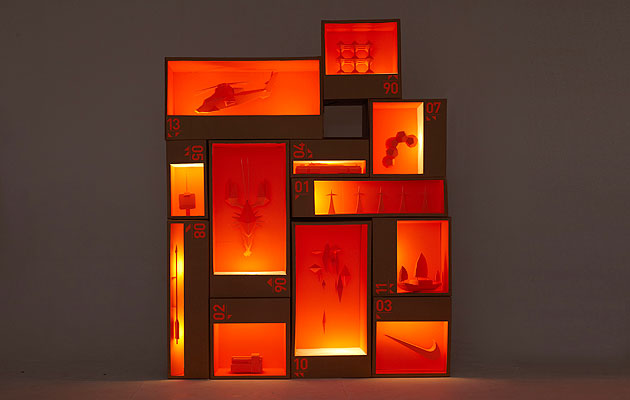|
|
||
|
A lobster, an attack helicopter, salt crystals and a backwards Nike swoosh were some of the intriguing contents of PostlerFerguson’s Wunderboxes, an installation that appeared in the grand entrance of London’s Victoria and Albert Museum this March. The collection of bright orange curiosities was there to announce the event Archive Live, a discussion about the digital future of archiving. Delving into their own forgotten drawers and folders, Martin Postler and Ian Ferguson resurrected 13 objects from the many images they had collected over their four years as a design consultancy. “We were thinking about the V&A and the way it has that Wunderkammer feel to it: rooms filled by people bringing back 1:1 models of the stuff they’d seen on their Grand Tour,” says Ferguson. “Nowadays, project research tends to be done on the web – searching through pictures instead of going out and experiencing things. It’s as if we’ve done a Grand Tour across the internet.” Each object was represented as a triangulated paper model, stored in a numbered cardboard box and viewed through a window of orange-coloured film. The chosen selection was a reflection of PostlerFerguson’s diverse influences, from technology and science to big brands and film culture. Personal taste weighed in, too. “It was quite an honest cross-section of what we like,” says Postler with a smile. His love of fishing was partly responsible for the lobster’s appearance in box number 06. “I am a fisherman!” he says, “but I think that came from our work with a company called Goods of Desire in Hong Kong. We did a big store for them and came up with the idea of giant folded paper fish that hang from the ceiling.” The pair, whose previous projects include paper model kits for machine guns, toy cargo ships and giant triangulated bears proposed as an attraction at Covent Garden, have created objects that refer to their ideology and process as much as items plucked from their eclectic portfolio. Ferguson describes the model of Star Wars character Han Solo frozen in carbonite (depicting his imprisonment at the end of The Empire Strikes Back) as referring to “a time when we were thinking about wrapping, shaping and folding stuff”. And was the backwards swoosh a subversive statement on the power-hungry nature of global brands? Not exactly. “We did it that way because we worried about getting sued,” says Postler. |
Image Postlerfergusen Studio
Words Riya Patel |
|
|
||




















